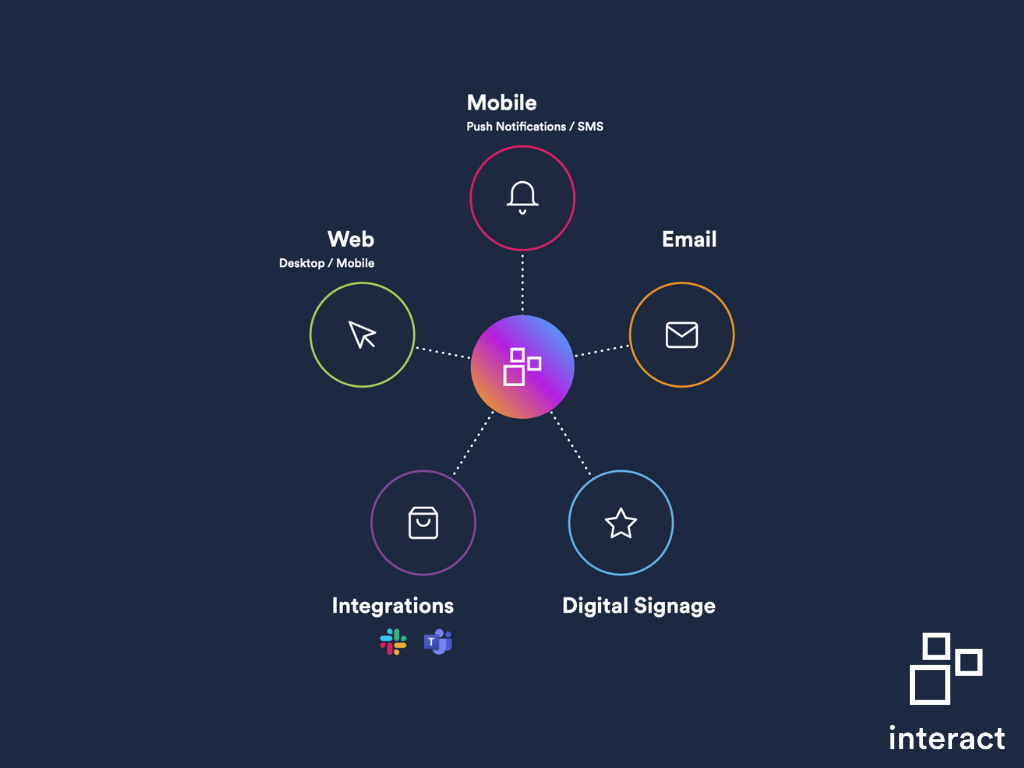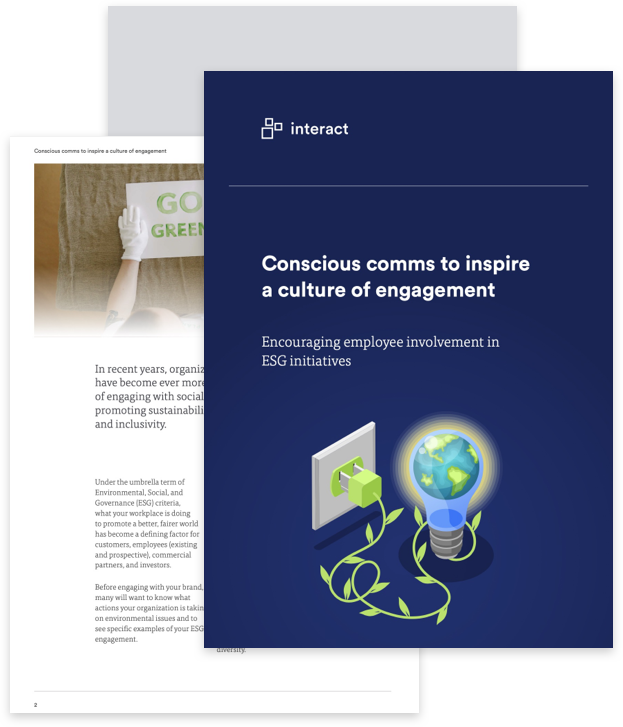With International Leadership Week and COP27 taking place this week, we explore why telling credible ESG and CSR stories is a challenge for business leaders, and why employee buy-in is essential for compelling storytelling around your organization’s ESG credentials.
Organizations are increasingly being held accountable by employees, customers, and the public for their environmental and societal impact. To win the favor of these audiences, brands and their leaders need to communicate a clear and meaningful narrative about what the organization is doing to make a positive impact on the world around it.
Yet CEOs are struggling to tell those stories.
CEOs around the world say they are under pressure to explain their organization’s ESG practices, according to recent research from KPMG. Yet the same report found that 42% of those CEOs are struggling to tell a compelling ESG story.
Being unable to provide any concrete examples of what your organization is doing to support ESG and CSR, or how it is doing it, can also be damaging to your organization’s growth. ESG has become a major area of focus for investors, and it is becoming increasingly important to people in the job market. If your organization can’t provide evidence of meaningful ESG and CSR activity, investors, skilled workers, and customers may be lured to other brands that can.
Your FREE guide to ESG communications
Before we explore the barriers preventing CEOs from promoting sustainability and other CSR initiatives, and how organizations can create more compelling stories for leaders to share, let’s make sure we understand the definitions of these often interchangeable terms.
What’s the difference between ESG and CSR?

ESG stands for Environmental, Social, and Corporate Governance and represents a set of standards concerning the environmental impact and social impact the organization has, and also looks at the internal governance within the business.
These standards mean ratings agencies can summarize performance in these areas into scores which can increase a company’s valuation and access to more capital as investors use them as a measure of how sustainable a company is.
CSR stands for Corporate Social Responsibility and a CSR strategy may include various activities such as reducing the company’s carbon footprint, volunteering, improving work practices, and participating in philanthropic activity.
These policies help to inform the public about the company’s values and goals. CSR practices are often self-regulatory and can vary widely, so this is a more qualitative measure and can be difficult to define, while ESG is more quantifiable and provides investors with a harder metric to help them decide which companies to invest in.
Both terms reflect how socially conscious an organization is, but ESG is concerned with establishing standards and metrics across different companies and industries. CSR may be more individually defined and relate closely to a company’s own values and activities.
Employee buy-in is the key to meaningful ESG storytelling
For leaders to provide ESG and CSR stories that satisfy even the toughest of critics, they need their people behind them. Without widespread buy-in in ESG and CSR policies and initiatives, leaders don’t have much to lean on in terms of compelling or meaningful evidence of the organization taking it seriously.
Barriers to employee buy-in often include:
- Some employees may believe that participation in ESG and CSR initiatives requires time or skills that they don’t they have, or financial input from their own pocket.
- When employees are focused on urgent tasks, they are less likely to use internal communication channels that aren’t important to them.
- Frontline workers may be less receptive to top-down communications that encourage them to engage in initiatives. This is where horizontal comms from their peers can help to get them excited about taking part.
- Participating in group and in-person activities is difficult for remote workers, so options that allow them to take part and have an impact need to be provided too.
Your FREE guide to ESG communications
How to generate employee engagement that fuels ESG storytelling
So what can leaders and communicators do to help overcome barriers and encourage employee involvement in the schemes that drive meaningful ESG storytelling? Here are three tips:
1. Give ESG comms a centralized digital home
The key to unlocking compelling ESG storytelling is to have a digital home for accessible communication around all things ESG related. This should provide all staff with everything they need to know, and messaging that inspires them to get involved.
For inspiration, it helps to look at what leading enterprises are doing to promote ESG through their investor relations webpages.
An investor relations (IR) page is an external area on an organization’s website that contains all of the information existing and potential investors may want to find out about the business. It has become best practice to have a specific page dedicated to ESG information that visitors to your IR page can navigate to. From an internal comms perspective, this can be mirrored using your intranet software, providing employees with a content area containing ESG policies, information, and updates.
If leadership communication is a challenge, intranet pages can be an ideal place to host vlogs and video updates as well as more traditional blogs and photos.

Having an ESG widget in a prominent position on your intranet homepage will encourage employees to click through and visit the dedicated pages. It can also be worthwhile to make your ESG page navigable from the top menu or sidebar menu, depending on your intranet’s design.
So what should a dedicated ESG page look like? Typically, an IR ESG page will feature the following:
- A clear mission statement
- Success stories from past initiatives
- Key action areas which can be broken down into individual widgets for environmental responsibility, social responsibility, and governance
- ESG-related values and how your organization lives by those values
- Key performance indicators
- Any internal presentations on ESG
- Upcoming ESG initiatives
- Annual impact reports
- Your organization’s ESG roadmap
- How employees can get involved
Your FREE guide to ESG communications
2. Personalize how employees receive ESG comms
So you have your dedicated ESG intranet area set up, but you can go a step further to ensure your comms around the subject are seen throughout the organization. Sending updates about ESG and CSR initiatives through a multichannel communications approach can help to boost both awareness and engagement.
Traditionally, organizations have used email as the one-size-fits-all solution for deploying all staff updates, but the truth is that relying on one channel doesn’t really suit every employee.
For example, your desk-based workers may be checking email less now they’re more reliant on channels such as Slack and Microsoft Teams. What’s more, email has never been a great fit for frontline workers who don’t always have access during their shifts, and if they do, they may rarely be checking it given the busy and hands-on nature of their work.
This is where a multichannel intranet can be instrumental in helping to boost ESG engagement.

An Interact intranet allows communicators to share leadership updates with every employee through the most relevant channels. From email and SMS to digital signage and mobile app.
3. Utilize employee voice
Leaders can’t share the stories they don’t know about. When the organization is communicating with employees about ESG and CSR activities, the conversation needs to work two ways, allowing people to share their experiences rather than just receiving top-down comms. This can provide leaders with rich anecdotal material to support their ESG storytelling and add credibility.
An intranet can operate as an enterprise social network, with social media features that help boost employee voices and get those ESG stories heard across the organization. A homepage that features a newsfeed with commenting enabled, and also provides a home for employee blog posts (which should also allow commenting), will allow users – including leaders – to see and engage with anything ESG related.
Forums and Communities can also provide dedicated areas for employees to discuss ESG and CSR matters, and share their stories.
Supporting impactful ESG storytelling
As we all continue to become more conscious, we should also continue to examine how we are communicating about ESG and sharing experiences of engagement within our organizations. In doing so, we can help to bolster the way our organizations are perceived by external parties concerned with our environmental and societal impacts through our leaders.
If you’ve found this content useful, why not check out our article on best practices for ESG communications?






